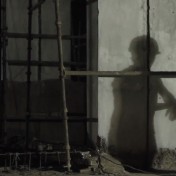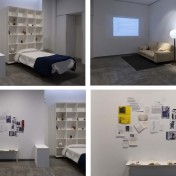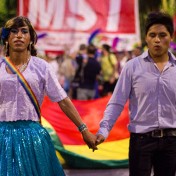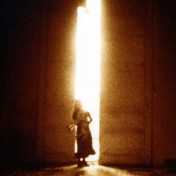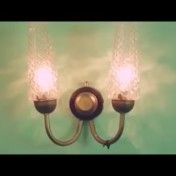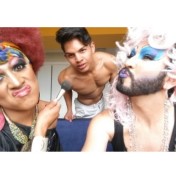The most striking thing about Behind the Tin Sheets_presence is the contrast between what you see and what you hear. On the one hand, the images portray the lives of immigrants working on the construction of a subway line in Bangalore (India). And what, in principle, seems like a documentary work on their living conditions and their uprooting, when we start to listen to the audio a displacement occurs that takes us to another state, because we are told stories in the first person that speak of dreams, ghosts and love stories.
Queer capital gain
Screening
Gus van Sant traveled to Rome for a 12-day shoot and in the end 7 episodes of “Ouverture of something that never ended” were recorded. It might seem that it is a strange encounter with Alessandro Michele, but the fact is that there was something foreboding in My Own Private Idaho (1991), the most celebrated film by Gus van Sant, when Mike (River Phoenix) and Scott (Keanu Reeves ) travel to the Italian countryside passing through Rome, in search of Mike's mother
The Spanish Earth (1937)
Screening
This post is a continuation of the one published in November 2019 "Charley Toorop in the IVAM Valencia and the social realism". In that we refer, to the thread of the comment on the exhibition that was being held at the IVAM at that time Reinventing the representation: Dutch interwar art ―with an abundant presence of works by Charley Toorop―, to the linking of the work of this artist with that of her father Jan Toorop, and now we have to refer to the work of her son John Fernhaut (John Ferno in the credits of the movie The Spanish Earth)
The relational art and the management of historical bankruptcy
Screening
What can be done in the field of art ―a sector so attentive to people's concerns and interests― when we are immersed in a process of change as profound as that represented by the introduction of internet? [only comparable to what the invention of the printing press supposed 500 years ago].
Facing them. The video interviews
Screening
The set of images on display that form the project “Facing them” with Muslim women from Valencia, force the recipient to put their life experience at stake, to inquire inside what is their own meaning in relation to what is watching.
50th anniversary of the Stonewall revolt
Screening
It is often cited as an event that gave rise to the Gay Pride and everything that would come later, the revolt that took place at the Stonewall Inn and in its surroundings, in the Greenwich Village of New York, on June 28, 1969. That was 50 years ago. For that reason, it does not seem a bad idea to dedicate a memory.
Feminist Video and Interventions
Screening
On Saturday April 6, within the program of parallel activities carried out within the framework of the exhibition Feminist Plots ―a formulation of the LABi team (a project of the Master in Photography, Art and Technique of the Polytechnic University of Valencia in collaboration with La Posta Foundation)―, we had the opportunity to see a feminist video and installations sample (plus a guided tour), composed of the following works:
Brutal Ardour. Sound art and experimental cinema
Screening
Before Manuel Huerga became a renowned director of stage, film and television, in 1978, with only 19 years, he made the film "Brutal Ardour" (29:13 min.). It is often said of this film that it is experimental, but unlike what used to happen with the experimental films of the time, in which the soundtrack was circumstantial ―it responded to the musical tastes of the author of the film, with little or no relationship with the film―, however, in the case of "Brutal Ardour", the music used for the soundtrack is not only relevant but also becomes the protagonist element.
the trap that listens to flamenco
Screening
When asking Pedro G. Romero "Is there a counterculture today?" He replies: "There are echoes and mirrors of what, historically, we know as 'the counterculture', perhaps, [in the Spanish case] the Comuna Antinacionalista Zamorana resonates in Espai en Blanc, or Tiqqun in France or Mexico; Ocaña and Nazario are easily transportable to certain forms of queer, or the suburban rumba has the same poetry as the trap that listens to flamenco..."
Crossdressing is Resisting
Screening
Being part of a historically excluded group, such as the LGBTI community, allowed me to understand that in the field of the enforceability of rights there is a resource that is continuously plundered and destroyed: the symbolic imaginary; who conquers it, has managed to gain a large part of the ground, thus, art becomes a strategy and the body becomes a tool.

